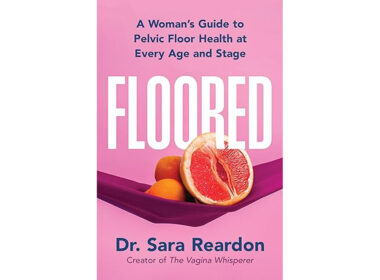Endometriosis is a disease where tissue similar to that which lines the uterus (called the endometrium) grows outside of the uterus. According to the World Health Organization (WHO), endo affects nearly 190 million women worldwide, about 10% of women of reproductive age. It’s a chronic disease that can have debilitating symptoms such as infertility, severe pain during and between periods, and pain during sex.
Unfortunately, there is no cure for endometriosis, and the gold standard for treatment is laparoscopic surgery to remove the tissue lesions. Depending on their location, this could be difficult to nearly impossible to completely remove, and the lesions can grow back (called recurrence). Many physicians recommend oral contraceptives to manage the symptoms of endo, but this doesn’t reduce the existing tissue lesions, and it deprives women of the health benefits of ovulation. Birth control also comes with a host of side effects, and may not completely eliminate endometriosis symptoms.
Both women with endometriosis and their physicians are increasingly seeking newer and non-hormonal treatment options for the disease. That brings us to a potential new kid on the block: cabergoline.
What is cabergoline?
Cabergoline is a prescription medicine FDA-approved since the mid-1990s to treat high levels of prolactin (aka hyperprolactinemia), whether it’s due to a pituitary gland tumor, or has no known cause (i.e., idiopathic). Cabergoline is a dopamine agonist (more on this below), and significantly decreases prolactin production. Sometimes, it’s also prescribed as a treatment for Parkinson’s disease, a nervous system disease causing uncontrolled muscle movements. (Cabergoline is not officially FDA-approved for Parkinson’s, but other dopamine agonists are FDA-approved for this purpose. Furthermore, the FDA label specifically acknowledges that cabergoline is prescribed for Parkinson’s symptoms.)
Evidence for cabergoline use in women’s health
On the women’s health front, a small 2009 study from Iran investigated off-label use of cabergoline as a treatment for uterine fibroids [1]. Cabergoline is also sometimes prescribed off-label to women undergoing in vitro fertilization (IVF) to decrease the risk of ovarian hyperstimulation syndrome [2]. And, as we’ll discuss in this article, cabergoline may also have a place in endometriosis treatment.
Study: Could cabergoline treat endometriosis?
Women with endometriosis may be more likely to experience hyperprolactinemia (high prolactin) than women without endo [3]. As described in a Natural Womanhood video interview with FEMM Chief Medical Officer Dr. Danielle Koestner, FEMM has protocols for treating endometriosis-associated hyperprolactinemia with cabergoline.
Comparing cabergoline to birth control for endo
Between 2016 and 2018, investigators from Boston Children’s Hospital and Brigham and Women’s Hospital tested cabergoline as a potential non-hormonal treatment for endometriosis-associated pain, comparing it to one standard-of-care oral contraceptive treatment: Norethindrone acetate (or NETA), a progestin-only oral contraceptive prescribed to treat abnormal bleeding and endometriosis symptoms [4]. The Boston and Brigham study enrolled nine women with confirmed endometriosis who were randomly assigned to receive cabergoline or NETA.
How endometriosis lesions grow
Now, you may be wondering: Why study cabergoline for endo? The short answer is: because of the way endometrial lesions grow, and how dopamine agonists (like cabergoline) might interfere with that growth.
When endometrial lesions form outside the uterus, the cells that form the lesion require a new blood supply to grow and divide. This process is called angiogenesis. Dopaminergic agonist drugs (like cabergoline) may interfere with angiogenesis. In the introduction to their study, the Boston and Brigham researchers cited one study that looked at a different dopamine agonist that reduced the size of endometriosis lesions, and another study that found that cabergoline reduced the size of endometriosis lesions in mice [4,5]. These studies provided the Boston and Brigham researcher’s rationale for conducting a clinical trial examining cabergoline’s effects on human women with endometriosis, specifically its effects on endometriosis-related pain..
Study details
The Boston and Brigham study participants were between 15-40 years old, premenopausal, reported pelvic pain, had surgically confirmed endometriosis (determined via laparoscopy within 2 years prior to being in the study), and were not using hormonal contraceptives.
Nine women were enrolled at the outset of the study. Four received NETA hormonal therapy for 6 months, and five received cabergoline for 6 months. One woman from each group withdrew during the study.
Study results
After 6 months, the women taking cabergoline reported decreased pain after 24 hours of the medication, and over the course of the study. The women taking NETA also had reduction in pain, but not as much as those taking cabergoline. In other words, while both treatment groups reported a reduction in pain, women taking NETA had a more moderate reduction in pain compared to women taking cabergoline, who noticed a more significant reduction in pain.
Cabergoline generally caused few side effects
In her interview with Natural Womanhood, Dr. Koestner called cabergoline “old, safe, and cheap.” The results of the Boston and Brigham study align well with Dr. Koestner’s quip. The most common reported side effects of cabergoline were related to nausea, abdominal cramps, and constipation. The most common side effects from NETA were similar to those of other oral contraceptives: weight gain, mood swings, and fatigue.
Despite these promising results, the Boston and Brigham study looked at an incredibly small group of women. Many more women will need to be studied to determine cabergoline’s safety profile and tolerability (the amount of side effects), and to see if the benefits of the drug outweigh any potential negative effects.
Is cabergoline worth further study?
While cabergoline (and other dopamine agonists) are not the only drugs that can inhibit angiogenesis, the Boston and Brigham researchers believe that cabergoline has a better safety profile compared to other drugs with the same effect. They are currently enrolling more women in a new clinical trial to attempt to increase their sample size and glean more information about the potential benefits of cabergoline for endometriosis-related pain (this time, compared to a placebo).
With a larger sample size, the researchers can also measure how (or if) cabergoline helps reduce other symptoms of endometriosis, like infertility or irregular bleeding, plus whether cabergoline shrinks endometriosis lesions or prevents or slows existing lesion growth. A tiny 2011 study of just nine women found that another dopamine agonist, quinagolide, decreased endo lesions by 69.5% over the course of 20 weeks [7]. Might cabergoline do the same?
The bottom line
The initial research on cabergoline as a non-hormonal treatment for endometriosis pain, while sparse, is promising. With further research on many more women, scientists may be able to uncover just how important angiogenesis is to endometriosis, and whether drugs that interfere with angiogenesis have the potential to prevent or slow lesion formation and/or progression. We look forward to learning more as further research becomes available.
Watch:
Early Endometriosis in Teens: Diagnosis, Treatment, and Help for Young Women
Listen:
The Natural Womanhood Podcast S3 Ep4: She wasn’t hysterical, she was sick (with Endo)
Additional Reading:
Diagnosing and treating endometriosis in the teen years
Can a TENS unit help with period or endometriosis pain?
“Sex should never be painful:” The connection between endometriosis and painful sex
References:
[1] Sayyah-Melli M, Tehrani-Gadim S, Dastranj-Tabrizi A, Gatrehsamani F, Morteza G, Ouladesahebmadarek E, Farzadi L, Kazemi-Shishvan M. Comparison of the effect of gonadotropin-releasing hormone agonist and dopamine receptor agonist on uterine myoma growth. Histologic, sonographic, and intra-operative changes. Saudi Med J. 2009 Aug;30(8):1024-33. PMID: 19668882. [2] Tang H, Hunter T, Hu Y, Zhai SD, Sheng X, Hart RJ. Cabergoline for preventing ovarian hyperstimulation syndrome. Cochrane Database Syst Rev. 2012 Feb 15;(2):CD008605. doi: 10.1002/14651858.CD008605.pub2. Update in: Cochrane Database Syst Rev. 2016 Nov 30;11:CD008605. doi: 10.1002/14651858.CD008605.pub3. PMID: 22336848. [3] Mirabi P, Alamolhoda SH, Golsorkhtabaramiri M, Namdari M, Esmaeilzadeh S. Prolactin concentration in various stages of endometriosis in infertile women. JBRA Assist Reprod. 2019 Aug 22;23(3):225-229. doi: 10.5935/1518-0557.20190020. PMID: 30969738; PMCID: PMC6724390. [4] DiVasta AD, Stamoulis C, Gallagher JS, Laufer MR, Anchan R, Hornstein MD. Nonhormonal therapy for endometriosis: a randomized, placebo-controlled, pilot study of cabergoline versus norethindrone acetate. F S Rep. 2021 Jul 24;2(4):454-461. doi: 10.1016/j.xfre.2021.07.003. [5] Gómez R, Abad A, Delgado F, Tamarit S, Simón C, Pellicer A. Effects of hyperprolactinemia treatment with the dopamine agonist quinagolide on endometriotic lesions in patients with endometriosis-associated hyperprolactinemia. Fertil Steril. 2011 Mar 1;95(3):882-8.e1. doi: 10.1016/j.fertnstert.2010.10.024. [6] Delgado-Rosas F, Gómez R, Ferrero H, Gaytan F, Garcia-Velasco J, Simón C, Pellicer A. The effects of ergot and non-ergot-derived dopamine agonists in an experimental mouse model of endometriosis. Reproduction. 2011 Nov;142(5):745-55. doi: 10.1530/REP-11-0223.[7] Gómez R, Abad A, Delgado F, Tamarit S, Simón C, Pellicer A. Effects of hyperprolactinemia treatment with the dopamine agonist quinagolide on endometriotic lesions in patients with endometriosis-associated hyperprolactinemia. Fertil Steril. 2011 Mar 1;95(3):882-8.e1. doi: 10.1016/j.fertnstert.2010.10.024. Epub 2010 Nov 5. PMID: 21055747.







